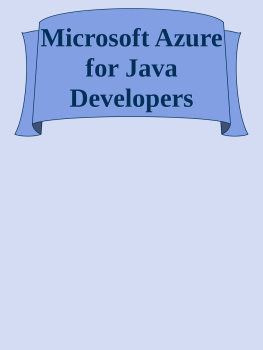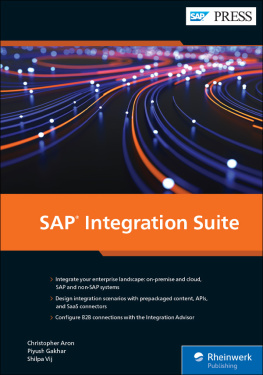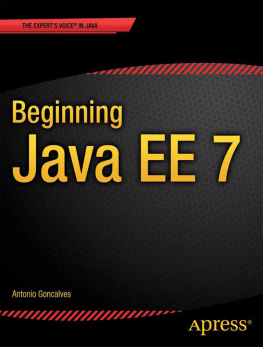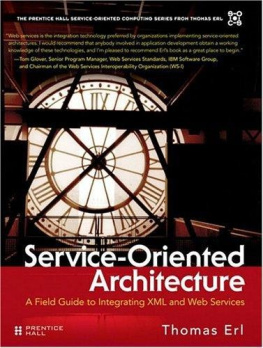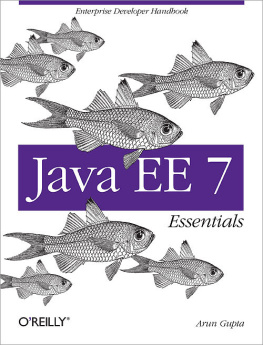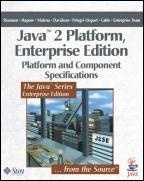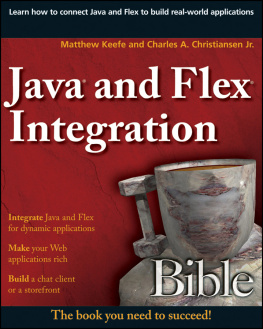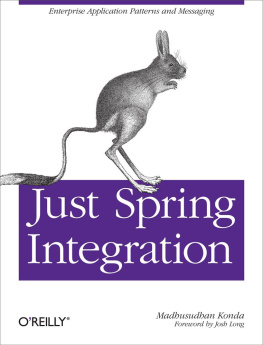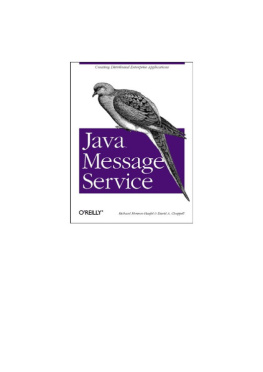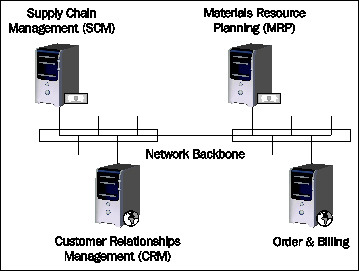Binildas A. Christudas [Binildas A. Christudas] - Service Oriented Java Business Integration: Enterprise Service Bus integration solutions for Java developers
Here you can read online Binildas A. Christudas [Binildas A. Christudas] - Service Oriented Java Business Integration: Enterprise Service Bus integration solutions for Java developers full text of the book (entire story) in english for free. Download pdf and epub, get meaning, cover and reviews about this ebook. year: 2008, publisher: Packt Publishing, genre: Home and family. Description of the work, (preface) as well as reviews are available. Best literature library LitArk.com created for fans of good reading and offers a wide selection of genres:
Romance novel
Science fiction
Adventure
Detective
Science
History
Home and family
Prose
Art
Politics
Computer
Non-fiction
Religion
Business
Children
Humor
Choose a favorite category and find really read worthwhile books. Enjoy immersion in the world of imagination, feel the emotions of the characters or learn something new for yourself, make an fascinating discovery.
- Book:Service Oriented Java Business Integration: Enterprise Service Bus integration solutions for Java developers
- Author:
- Publisher:Packt Publishing
- Genre:
- Year:2008
- Rating:3 / 5
- Favourites:Add to favourites
- Your mark:
Service Oriented Java Business Integration: Enterprise Service Bus integration solutions for Java developers: summary, description and annotation
We offer to read an annotation, description, summary or preface (depends on what the author of the book "Service Oriented Java Business Integration: Enterprise Service Bus integration solutions for Java developers" wrote himself). If you haven't found the necessary information about the book — write in the comments, we will try to find it.
In DetailThe goal of Java Business Integration (JBI) is to allowcomponents and services to be integrated in a vendor-independentway, allowing users and vendors to plug and play.Java Business Integration (JBI) is a specification aiming todefine a Service Provider Interface for integration containers sothat integration components written for these containers areportable across containers and also integrate with other componentsor services using standard protocols and formats. JBI is based onJSR 208, which is an extension of Java 2 Enterprise Edition(J2EE).This book first discusses the various integration approachesavailable and introduces the Enterprise Service Bus (ESB), a newarchitectural pattern that facilitates integrating services. ESBprovides mediation services including routing and transformation.Java Business Integration (JBI) provides a collaboration frameworkthat provides standard interfaces for integration components andprotocols to plug into, thus allowing the assembly ofService-Oriented Integration (SOI) frameworks following the ESBpattern. Once JBI and ESB are introduced, we look at how we havebeen doing service integration without either of these usingtraditional J2EE. The book then slowly introduces ESB and, with thehelp of code, showcases how easily things can be done usingJBI.What you will learn from this book?
Assembling services and porting them across containers usingJBI
Exposing EJB as a WSDL-compliant service across firewalls
Binding remote services to ESB to be consumed internally
Exposing local components in ESB like POJO as externallyaccessible WSDL-compliant services
Providing a web service gateway for external consumers
Accessing web services over a reliable transport channel likeJMS
Implementing web service versioning using ESB
Implementing service aggregation at ESB
Transactions, Security, Clustering, and JMX in ESB
A programmer, designer, or architect in Java who wants to learnand code in JBI or ESB.
A programmer, designer, or architect who doesnt normally codein Java can still benefit from this book, since we assembleintegration components using XML with little to no Java code.
An IT Manager or an Officer who knows well about SOA or SOI butwant to see something in code (you can adorn your flashypresentations with some live code too).
Binildas A. Christudas [Binildas A. Christudas]: author's other books
Who wrote Service Oriented Java Business Integration: Enterprise Service Bus integration solutions for Java developers? Find out the surname, the name of the author of the book and a list of all author's works by series.

![Binildas A. Christudas [Binildas A. Christudas] Service Oriented Java Business Integration: Enterprise Service Bus integration solutions for Java developers](/uploads/posts/book/119365/thumbs/binildas-a-christudas-binildas-a-christudas.jpg)
